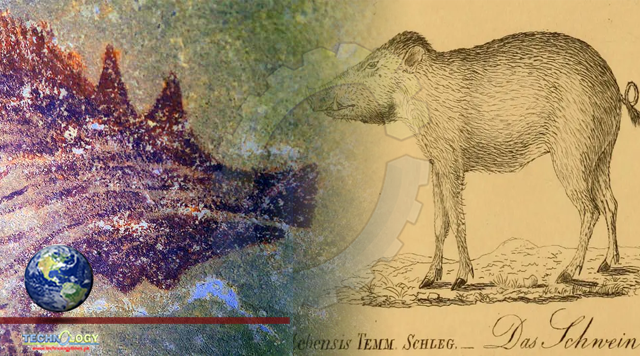A wild pig painted on the wall of an island cave 45,000 years ago might be the oldest figurative artwork ever seen, The New York Times reported on Saturday, citing a study published in Science Advances this month.

By HAGAY HACOHEN
Discovered on the Indonesian island of Sulawesi, the Leang Tedongnge limestone cave-art depicts three Sulawesi warty pigs painted in red ochre – two of them appear to be fighting while the other looks on.
While the fight scene survived poorly, the third animal is in nearly pristine condition. The authors of the scientific article claim that “to our knowledge, the animal paintings from Leang Tedongnge is the earliest known representational work of art in the world.”
The cave was discovered four years ago by Basran Burhan, a Griffith University PhD student. The finding “blew me away,” said archeology Prof. Adam Brumm, also of Griffith.
“It’s one of the most spectacular and well-preserved figurative animal paintings known from the whole region,” he told Artnet News. Using Uranium-series isotope dating, Maxime Aubert was able to discover that a calcite deposit which formed on top of the painting was 45,500 years old, BBC reported. “The people who made it were fully modern,” he said, “they were just like us.”
Burhan, Brumm and Aubert are among the scientists who cooperated to write the scientific article regarding the discovery. Ochre was the pigment of choice for many prehistoric artists, from Lascaux Cave in France to Blombos Cave in South Africa and Ubirr Australia.
While the art found in the South African cave is thought to be 70,000 years old, it isn’t as well preserved as the recent finding and might have been abstract.
The question isn’t only what one sees as “art,” but also what we mean when we say that the people who painted were “just like us,” Barcelona University Prof. of Archeology João Zilhão told the Times.
“There is no evidence about the anatomy of the people who did this stuff,” he said. “The islands, which are now called Indonesia, actually have traces of humanoids dating back one million years. However, not all of them were Homo sapiens like those who arrived 45,000 years ago, whereas Homo floresiensis were living there as far back as 60,000 years ago.”
Smaller than modern humans, the latter were a little over three feet in height, and have been nicknamed “hobbits” by modern science. This enigma might be solved soon, as the cave art also includes hand-prints, made when the people who made them placed their palms on the wall of the cave and spat the pigment out.
Scientists hope to find traces of saliva and learn the DNA of the long-gone painters, the BBC reported, solving the mystery of what sort of humans observed and painted the wild pig thousands of years ago.
Originally published at The jerusalem post